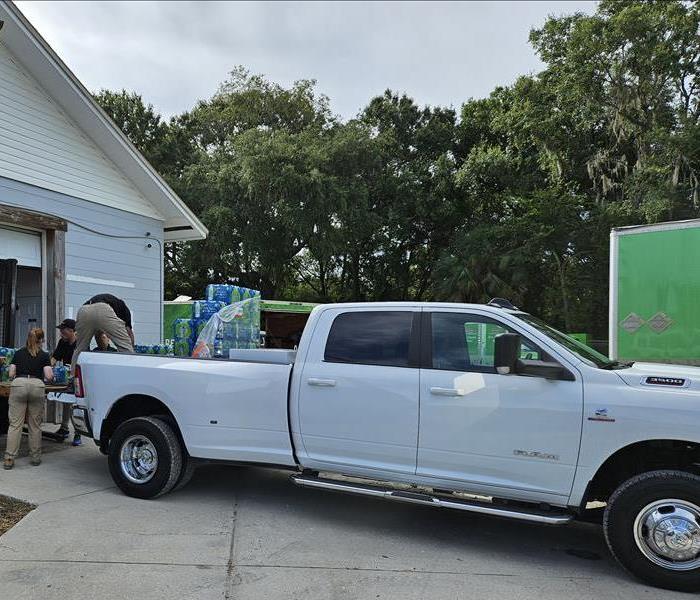Water Damage in Commercial Kitchens: Recovery and Clean-Up Tips
6/12/2024 (Permalink)
 With the right knowledge and prompt action, you can minimize the downtime and get your commercial kitchen up and running again.
With the right knowledge and prompt action, you can minimize the downtime and get your commercial kitchen up and running again.
Accidents happen, and in the fast-paced environment of a commercial kitchen, water damage is a common occurrence. Whether it's a burst pipe, a leaky dishwasher, or flooding from heavy rain, water damage can disrupt your business operations and lead to costly repairs. However, with the right knowledge and prompt action, you can minimize the downtime and get your commercial kitchen up and running again.
Identify the Source of the Water Damage
The first step in addressing water damage is to identify the source. Quickly locate and shut off the water supply to prevent further damage. Common sources of water damage in commercial kitchens include faulty plumbing, damaged appliances, and weather-related incidents. By identifying the source, you can better understand the extent of the damage and take appropriate action.
Prioritize Safety
Before entering the affected area, make sure it is safe to do so. If there are any electrical appliances, turn off the power immediately to avoid the risk of electrocution. In case of severe flooding, it may be necessary to evacuate the premises until professional help arrives.
Contact a Professional Commercial Restoration Service
Commercial water damage requires professional expertise to ensure thorough and efficient recovery. Contact a reputable commercial restoration service like SERVPRO® as soon as possible. SERVPRO specializes in commercial water damage restoration and can help you with the cleanup process, minimizing the impact on your business.
Document the Damage and Notify Insurance
Take photos and videos of the water damage before any restoration work begins. This documentation will be useful when filing an insurance claim. Notify your insurance company promptly to begin the claim process and ensure that you have all the necessary paperwork in order.
Remove Standing Water
If it is safe to do so, begin the water extraction process to remove standing water from the affected areas. Use mops, buckets, or wet vacuums to remove as much water as possible. The faster you can remove the water, the lower the risk of secondary damage, such as mold growth.
Dry and Dehumidify
After water extraction, it is crucial to thoroughly dry the affected areas using industrial-grade fans and dehumidifiers. This step is essential to prevent the growth of mold and mildew, which can pose health risks to occupants and cause further damage to your commercial kitchen.
Clean and Sanitize
Once the affected areas are dry, cleaning and sanitization are necessary to ensure a safe and hygienic environment. Use commercial-grade cleaning products to remove any remaining contaminants and bacteria. Pay special attention to hard-to-reach areas, such as corners and crevices, where mold can easily thrive.
Repair and Restore
Once the cleanup process is complete, it's time to repair and restore any damaged structures, equipment, or fixtures. A professional commercial restoration service like SERVPRO® will have the expertise and resources to handle repairs efficiently, getting your commercial kitchen back to its original state.
Prevention is Key
To minimize the risk of future water damage, it's essential to implement preventative measures. Regularly inspect plumbing systems, appliances, and the building's exterior for any signs of damage or deterioration. Promptly address any leaks or issues to prevent them from escalating into larger problems.
In conclusion, water damage in commercial kitchens can disrupt your business and cause significant financial loss. By following these recovery and clean-up tips, along with the assistance of a professional commercial restoration service like SERVPRO, you can mitigate the damage and restore your commercial kitchen quickly. Remember, acting promptly is crucial in preventing secondary issues like mold growth. Don't hesitate to reach out to expert help for efficient and reliable commercial water damage restoration services.



 24/7 Emergency Service
24/7 Emergency Service